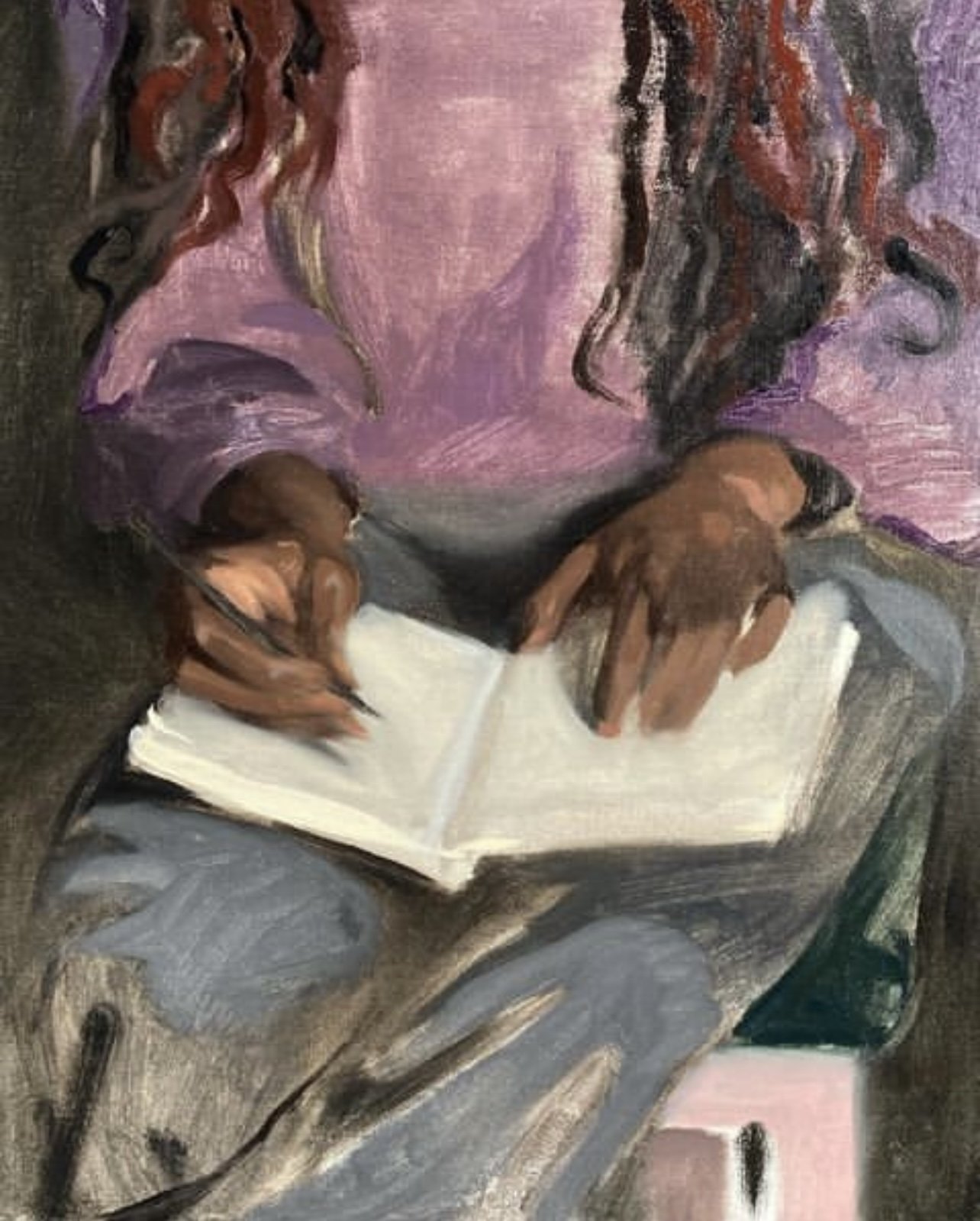Josie Goddard: The Poetry in Between
English artist Josie Goddard, born and currently based in Marlborough, Wiltshire, underwent formal training at the Charles H. Cecil Studios in Florence, Italy, and holds an MFA from the City and Guilds Art School in Kennington, London. She paints in a wonderfully recognisable old masters style while focusing on contemporary subject matter that provides a fresh take on domestic themes through candid moments.
Her latest solo show Paintings at White Horse Gallery examines the influences that classical painting methods have on the presentation, composition, and perceived value of artwork while expressing her joy in the process of painting.
Josie Goddard, 2022. Photo by Victoria Tapper.
Goddard’s time in Florence was intense and satisfying as she developed her own language within traditional techniques that could then be transferred to still lifes. After three years of rigorous instruction in 19th-century old master techniques, she went on to complete an MFA at the City and Guilds Art School. The program allowed her to research her own artistic practice through what she describes as a “horrible and necessary” exercise to decipher what works and what doesn't. She reflects on these experiences as both challenging and essential for her practice and integral to the evolution of what her creative process has become today.
In the past, she has struggled with the influence her training background has had on her artworks and creative process. After leaving Florence, she was resistant to the formal training being so ingrained in her methodology. As she came to make friends with her process, she was able to take ownership of that training and make it her own. She now leads with tactility in her paintings as a meditative method to help her not to over-intellectualise her artistic practice.
Drawing inspiration from life itself, portraits and still lifes are at the centre of Goddard’s current body of work. Rather than recreating the traditional affluent, white male gaze that most portraits and still life paintings are viewed from, she shifts the lens to peripheral details that capture the moments in between. Her choice to do so simultaneously subverts and critiques the historically rigid practice associated with old masters’ techniques, yet communicates in a familiar style.
Her paintings have what she calls an “unfinished finished” look. She prefers “unfinished” textures in the sense that a painting might not look like it is finished. She believes there is a difference between a painting being finished and looking unfinished, and that at the end of a particular piece of work, it might not look totally complete. Often the intuitive decision on whether a work is done or not comes after she has the chance to sleep on it, as painting from life is a physical interaction with real-time responses that need time to be digested.
Further, she finds that a subject’s face can often distract from everything else in a painting’s composition. The traditional, big portraits of wealth and power are focused on the subject’s identity and because of this, viewers have the tendency to miss the subtle and exquisite details of how a hand rests on a table or the way fabric folds. These gaps between a person and a thing are what particularly interests Goddard and inspired her literal shift away from strictly classical portraiture to the moments in between. She finds poetry in these subtleties and that these quieter moments often transform a generic-looking portrait or still life into something both deeply personal and compelling.
Josie Goddard at her show Paintings at White Horse Gallery, 2022. Photo by Victoria Tapper.
Goddard’s first solo exhibition Paintings follows her focus on tactility in being heavily material based. The show has a triumphantly female theme with the artworks portraying females with symbols of indulgence and elegant power, in which she depicts autonomous femininity without the complete figures of women themselves. The cigarettes, leather, and other emblems of conviction are that much more powerful when left to tell the narrative independent of a subject’s identity.
Her philosophy for the show was to paint things she found beautiful, and the meaning of each piece came about through the process of creation. Producing the work took place over an intense three month period and was the artist’s first time painting for a particular space–a concept she found more natural compared to painting for a show's particular theme which is most typical. Paintings conveys the joy she finds in painting and translates that through objects instead of a more traditional focus on what the show is about.
Venus in Leather, 2022. Oil on linen.
Going forward, Goddard predicts travelling will be important in order to broaden the scope, colour palette, and subject matter of her work. Generally, she wants to get back to portraiture, but in a bigger sense, that encompasses people and objects. Hyperaware that her style is historically western focused, she wants to continue to break away from that classical art history canon. Goddard hopes to further engage in self-critique in a much broader sense of her practice and the world through residencies.
Paintings is on view through 27 March 2022 at the White Horse Gallery in Marlborough, Wiltshire.
For more information on Josie Goddard, follow her on Instagram and visit her website.
Reese Vandeven
Agents of Change Co-Editor, MADE IN BED











